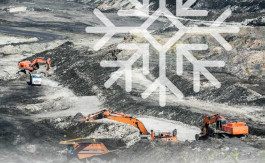Benefits of preventative maintenance and avoiding refrigerant emissions
Mine site vehicles and equipment operate under severe conditions including high temperatures and humidity and high dust levels. This means air conditioning equipment is working at much higher pressures and thermal loads, making failure of parts and loss of refrigerant more likely.
Regular equipment maintenance programs can optimise energy efficiency and performance of mobile air conditioning systems. All air conditioning systems will suffer faults over their operating lifetime leading to performance degradation. Preventative maintenance practices can minimise the occurrence and impacts of these faults.
Regular refrigerant leak monitoring can identify issues when they occur, reducing costs associated with refrigerant loss and unproductive down-time when equipment fails unexpectedly. It also minimises the risks of emissions of refrigerants to the atmosphere.
The level of maintenance and servicing has a direct relationship with the level of emissions over time from air conditioning equipment. Regular maintenance to reduce emissions from refrigerant leaks and energy use in stationary equipment is expected to reduce greenhouse gas emissions by 35 million tonnes CO2e to 2030. Best practices in this area are shown to reduce energy use by 10 to 20 per cent.*
Faults that develop due to a lack of maintenance include incorrect refrigerant charge, dirty filters, fouled evaporators and condensers, and inappropriate changes to control settings.
These faults tend to build up over the operational life of the system. Environment and operator behaviour play a significant role in these faults.
A maintenance program that addresses common faults would include finding and repairing refrigerant leaks, ensuring the correct refrigerant charge, cleaning coils (condensers and evaporators), replacing filters and ensuring good airflow, and resetting controls.
Always refer to the product manufacturer’s guidance when implementing a maintenance program for your air conditioning systems.
* Leaks, maintenance and emissions: Refrigeration and air conditioning equipment
http://www.environment.gov.au/protection/ozone/publications/leaks-maintenance-emissions-refrigeration-air-conditioning equipment



